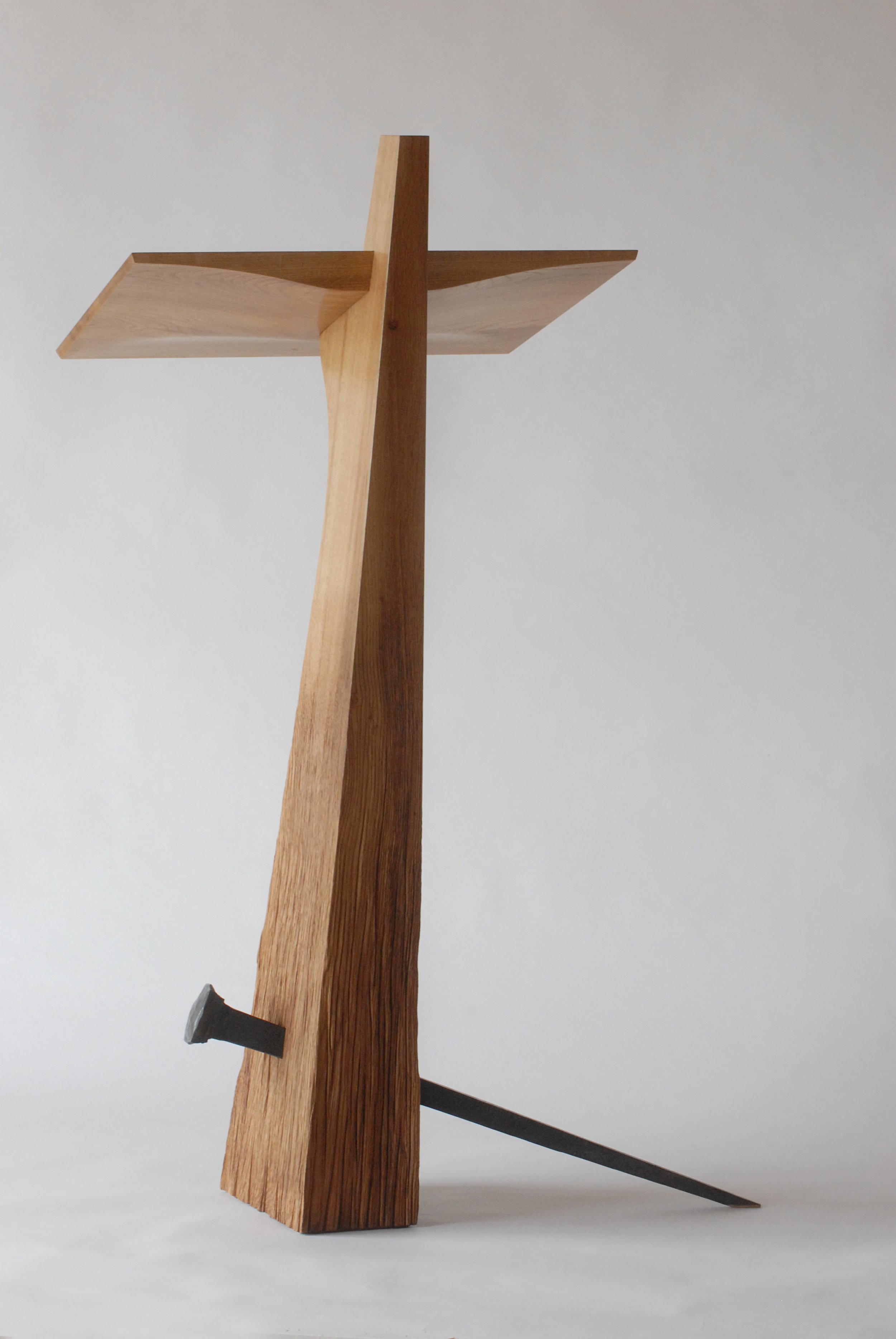Elisabeth Frink: Eagle (lectern)
Elisabeth Frink’s bronze lectern for Basil Spence’s Coventry Cathedral was her first major commission. She was known at the time for her sculptures and drawings of birds – one made while she was a student was exhibited in 1952 and bought immediately by the Tate Gallery – and the lectern was to take the traditional form of an eagle.
Stephen Owen: Communion table and lectern
Winner of the A+C Art Award for a permanent commission, Stephen Owen’s carved communion table and lectern are powerful symbolic pieces of liturgical furniture.
Chris Eckersley and Gareth Neal: Re-ordering of the Sanctuary
Following a major refurbishment in 2010 it was apparent the reconfigured space lacked visual cohesion. Monsignor Curry wished to commission suitably qualified artist-designers to produce a new, unified scheme of furnishings.
Ecclesiart is an online project that raises awareness of significant works of modern and contemporary art since 1920 in UK churches and cathedrals.
The selected works represent the diversity of high quality church commissions and reflect developments in artistic practice and ecclesiastical art and design. You can explore the collection using the tiles below or by using the Ecclesiart map.
We seek to encourage increased responsibility towards works which may be under-appreciated or at risk and hope that this selection of works provides inspiring and challenging examples of art in churches useful to any parish or individual wishing to commission a new work.
We welcome nominations of new works to be added to Ecclesiart. Please email us with a short text about why you think a work of art should be included with a short theological reflection on the work and its context (no longer than 150 words) and if possible please include images. Please note that we do not accept nominations from artists for their own work.
All permanent works shortlisted for the Award for Art in a Religious Context are added to Ecclesiart. For all other nominations, the Director and trustees of Art and Christianity reserve the right to select works which they determine as meeting the criteria of aptness to context, artistic and technical merit and appropriate theological meaning.



